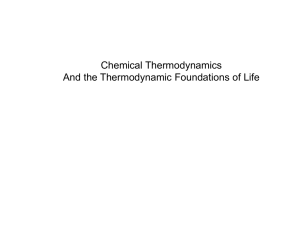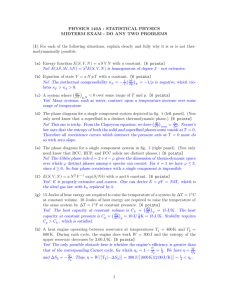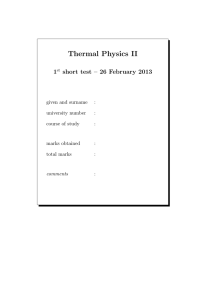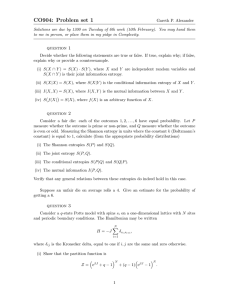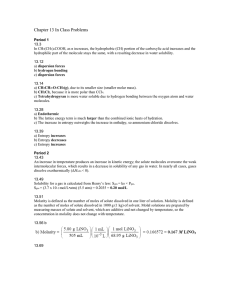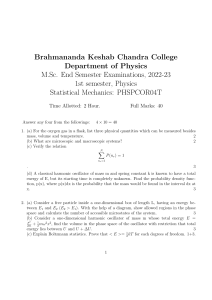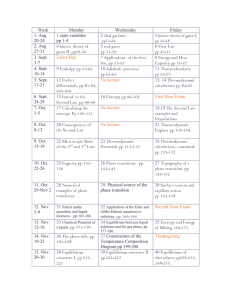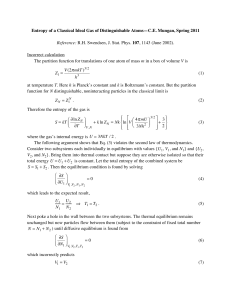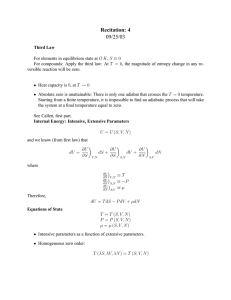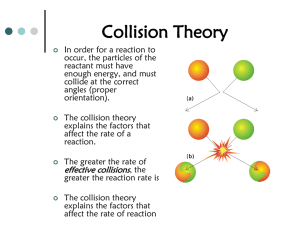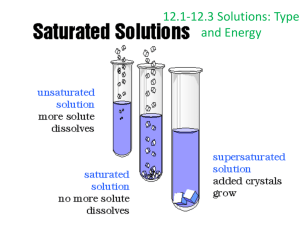(1)
advertisement
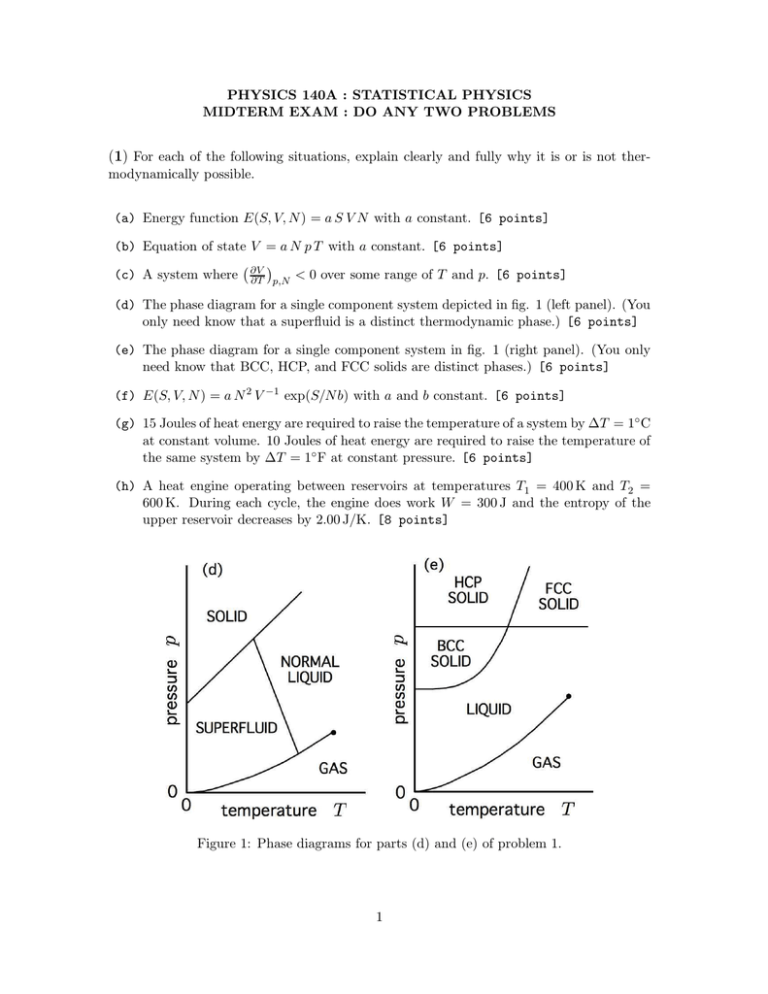
PHYSICS 140A : STATISTICAL PHYSICS MIDTERM EXAM : DO ANY TWO PROBLEMS (1) For each of the following situations, explain clearly and fully why it is or is not thermodynamically possible. (a) Energy function E(S, V, N ) = a S V N with a constant. [6 points] (b) Equation of state V = a N p T with a constant. [6 points] (c) A system where ∂V ∂T p,N < 0 over some range of T and p. [6 points] (d) The phase diagram for a single component system depicted in fig. 1 (left panel). (You only need know that a superfluid is a distinct thermodynamic phase.) [6 points] (e) The phase diagram for a single component system in fig. 1 (right panel). (You only need know that BCC, HCP, and FCC solids are distinct phases.) [6 points] (f) E(S, V, N ) = a N 2 V −1 exp(S/N b) with a and b constant. [6 points] (g) 15 Joules of heat energy are required to raise the temperature of a system by ∆T = 1◦ C at constant volume. 10 Joules of heat energy are required to raise the temperature of the same system by ∆T = 1◦ F at constant pressure. [6 points] (h) A heat engine operating between reservoirs at temperatures T1 = 400 K and T2 = 600 K. During each cycle, the engine does work W = 300 J and the entropy of the upper reservoir decreases by 2.00 J/K. [8 points] Figure 1: Phase diagrams for parts (d) and (e) of problem 1. 1 (2) A thermodynamic system obeys E(S, V, N ) = aS 4 . NV 2 (a) Find T (S, V, N ). [10 points] (b) Find p(T, V, N ). [10 points] (c) Find µ(T, p). [10 points] (d) Suppose the volume is isothermally expanded by a factor of eight (V → 8V at constant T ). Then the temperature is isobarically increased by a factor of two (T → 2T at constant p). By what factor does the entropy change? Be sure to indicate whether S increases or decreases. [10 points] (e) A volume V = 10 ml at pressure p = 2.0 bar and temperature T = 800 K is adiabatically expanded to a volume V = 40 ml. How much work does W the system do during the expansion? What is the system’s final temperature? [10 points] (3) Consider the equilibrium between a single component gas (assumed ideal and diatomic) and a solution of it in a liquid or solid solvent. Let µG denote the chemical potential of the gas molecules in the gas, and µS their chemical potential in solution. (a) What are the conditions for thermal, mechanical, and chemical equilibrium of the gas and solute? [10 points] (b) Let ψ(T, p) be the Gibbs free energy of a single solvent molecule in the liquid, i.e. without the entropy of mixing term. If the concentration of solute is x, what is the chemical potential µS (T, p), i.e. when the entropy of mixing term is included? You may assume x ≪ 1. [10 points] (c) For an ideal gas, one has µ(T, p) = kB T χ(p) − ( 21 f + 1) ln T , where f is the familiar number of relevant ‘degrees of freedom’ per molecule and χ(p) is a function of p alone. Determine χ(p). [10 points] (d) In liquids, the dependence of ψ(T, p) on p typically is weak. Assuming ψ(T, p) = ψ(T ), find an expression for x(T, p) in equilibrium. [10 points] (e) Suppose we further neglect the temperature dependence of ψ and write simply ψ(T ) = ψ0 , where ψ0 is a positive constant. Sketch x(T, p) versus temperature at constant pressure. Be sure to identify any relevant features, such as maxima, minima, vanishings, etc. [10 points] 2
